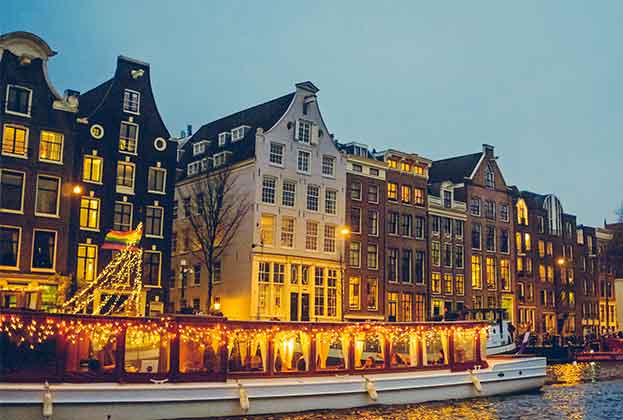Arrivals to EU destinations still reporting growth despite geopolitical headwinds influencing travel trends across key source markets
Economic and geopolitical matters are shaping travel trends in Europe
International arrivals in EU tourist accommodation have grown extensively over the last five years, reaching an estimated 419.8 million in June 2019 on a rolling 12-month basis. This is up 2.1% compared to the same period a year before. However, the rate of growth is slowing from its peak in late 2015, according to Eurostat (see chart below).
Brexit uncertainty may be generating economic headwinds for the UK and EU, but is also influencing tourism trends across the EU. The UK is the second largest source market for tourism in the EU, behind Germany, with 74.8% of all outbound UK visits heading to EU destinations in 2018. However, the unfavourable fall to the value of the pound post-EU referendum has resulted in a slowdown in outbound visits to Europe, with arrivals from the UK declining by 1.6% year-on-year in June 2019, on a rolling 12-month basis.
While UK arrivals are declining, total arrivals into Europe have been bolstered by source markets further afield. Arrivals from the U.S. have grown extensively, in line with the strong dollar against both the euro and the pound compared to a year ago. According to Tourism Economics, the U.S. has contributed to an 11% share of growth in European tourism during the first few months of 2019 (the highest share of any non-EU country). This influx of U.S. visitors to Europe is expected to increase, with Tourism Economics forecasting growth of 22.3% between 2018 and 2023.
This is helping to maintain strong operational performance in some tourism markets. In Spain, year-to-date arrivals (as of July 2019) from the U.S. are up 26.9% compared to last year, in line with significant RevPAR growth in both Barcelona and Madrid over the same period. Similar trends are being experienced across both Greece and Italy, supporting the 7.7% year-on-year RevPAR growth in July for Southern Europe recorded by STR - the fastest growing region in Europe.
Chinese visitors to Europe expected to grow as a result of political tensions with Hong Kong and the U.S.
HSBC suggest that the political protests in Hong Kong could reduce Chinese tourist arrivals to the city by 350,000 this year. Similarly, political tension between China and the U.S. has dampened Chinese arrivals into the U.S., which were down 5.7% in 2018. It appears, however, that European destinations have benefited. The European Travel Commission noted that Chinese holiday bookings to the EU were up 16.9% year-on-year for the period between January and April 2019.
While traditional destinations, such as France, Italy and the UK will benefit, emerging markets in Central-Eastern Europe could see a much more pronounced growth in Chinese arrivals. In 2018, Central-Eastern EU destinations recorded a 10.6% growth in Chinese arrivals, outstripping the 5.1% average across all EU markets. New direct flights from China to Central-Eastern European markets, such as the Shanghai- Budapest route launched by China Eastern Airlines in June has facilitated this growth along with favourable changes to Visa schemes. This has also been the case for countries such as Serbia and Montenegro, with Chinese arrivals growing 38.6% and 83.1% respectively year-on-year between January and July 2019.
Could the no-fly movement take off?

Greater consumer awareness around environmental issues, in particular, the carbon footprint associated with air travel, is leading some travellers to opt for less carbon-intensive travel alternatives. In Sweden, the 'flight-shaming' movement resulted in airport passenger numbers declining by 4% year-on-year in July 2019, according to Swedavia.
Rail companies have begun capitalising on this trend. For example, Deutsche Bahn (German Rail) saw revenue rise 24% following a social media campaign titled “No Need to Fly – Around the World in Germany”, comparing well-known global landmarks with German lookalikes.
New high-speed rail routes connecting major European cities have significantly increased the appeal of rail travel. The London–Amsterdam Eurostar route launched additional daily services in June 2019 due to such high demand.
Rail travel is also increasingly appealing to those tourists seeking unique experiences. Chinese tourists, for example, are expected to be a key driver of rail usage across Europe with Eurail Group forecasting a 14% uptick in Chinese tourists purchasing Eurail passes in 2019.
Read the article within Spotlight: European Hotel Trends below.
.jpg)
